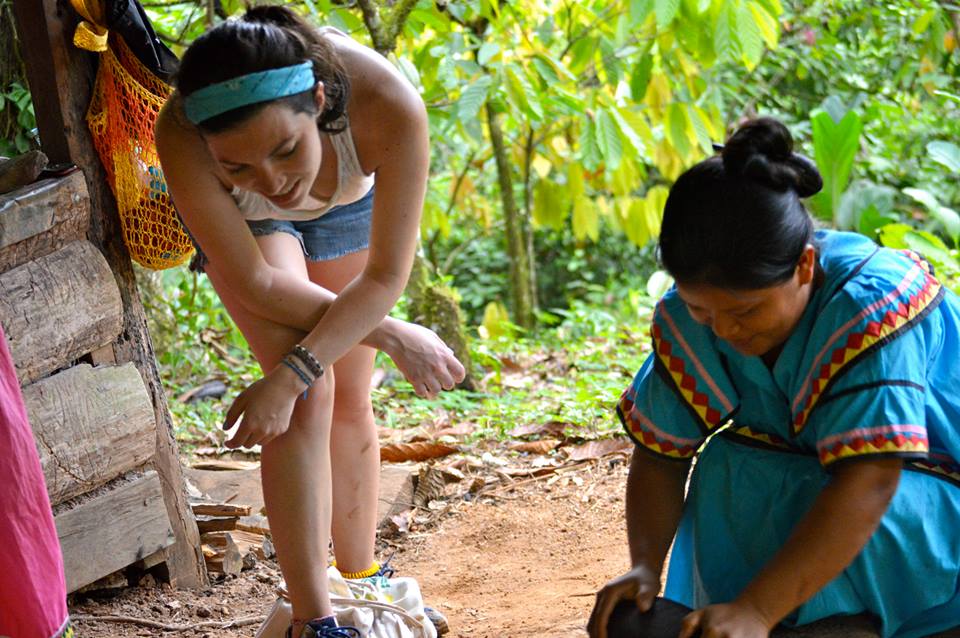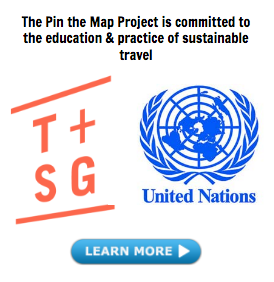There is a beach off the coast of Colombia known as Playa Blanca on the island of Isla Baru. Home to sand that runs through your fingers like fine sugar, swaying palm trees and a spectrum of turquoise-blue waters, Playa Blanca is the type of beach you hope to find when flying south of the equator; there’s just one problem: tourism.
Tourism has transformed what had once been a pristine slice of paradise to a cross between an amusement park and Cancun Spring Break. Plastic bottles and empty cervezas litter the beach, bloated tourists lay in the sun like rotisserie chickens as children bounce by on banana boats. Just behind the beachfront restaurants that line the beach, there is a darker and desperate side to Playa Blanca. Dirt packed roads marked with piles of garbage, polluted lagoons with brown-murky waters and-by far the most heart breaking sight—local islanders wandering barefoot amidst piles of forgotten trash, hoping to peddle coconuts to visitors for a mere $2.
Tourism is a double edge sword on Playa Blanca-on one hand helping bring money to the area and the impoverished islanders, while on the other hand it has almost decimated the beauty of the area while hardly supporting the local population. This devastating reality of tourists ruining destinations is a trend seen around the world, but thankfully there is a future of tourism that promises to transform the way we travel.
The Future of Tourism: Sustainable Travel
You’ve heard the popular quote: “Take only memories, leave only footprints.” It is the Millennial mantra of the sustainable tourism movement, the idea that visiting a destination should leave it for the better rather than tear it apart. Recently, I attended the United Nations global summit on sustainable tourism at their headquarters in New York to discuss the future of travel. With tourism booming and over 1 billion projected travelers globetrotting as you read this, the idea of redefining what it means to travel has never been direr.
Sustainable travel is an effort to limit the negative impact of tourism on a destination and educate travelers about how to be more “green” when going abroad. With entire nations disappearing to global warming and mankind’s impact on the environment, the need to limit our carbon footprint is an urgent issue that the United Nations has made a top priority with the development of 17 global sustainable tourism goals committed to eradicating hunger, poverty and transitioning businesses into greener practices.
How You Can Practice Greener Travel
The efforts to push sustainable travel ultimately rests on both the individual travelers and the businesses that accommodate and guide them. Tourism businesses are supporting the cause with sustainable hotels now looking at how they handle waste, how they manage water and all the resources that go into accommodating travelers; making an effort to be conscientious of their environmental impact.

The sustainable travel movement is a youth-driven cause because — and let’s be frank here — the Millennial generation has gotten the shit end of the stick when it comes to an earth polluted by previous generations. So, how can you practice greener travel? Here are some expert tips…
- Aim to minimize your impact on the local environment by recycling, avoiding litter, being conscientious of your water use, electricity use, etc.
- Support small businesses by buying from local artisans and shops rather than chain retailers.
- Get to know the destination you are visiting, connect with locals and in turn you’ll be inspired to respect the local culture and customs.
- Educate others about sustainable tourism! Use social media and your respective blog to highlight destinations, local communities efforts and spread the word about greener travel.
- Consider group tours that support local communities and support a destination.
- Likewise, consider hotels that are eco-friendly and make an effort to minimize their impact on the local environment.
- Collect remaining change and local currency from your trip and donate it to a nearby cause.
The Takeaway…
Sustainable tourism is the future of travel because it simply has to be. Some of the most beautiful destinations on earth suffer at the hands of tourists who arrive uninformed and walk away unaware of their impact. While travel can be introspective, a destination should not be sacrificed on the alter of one’s soul-search.
The Pin the Map Project is committed to sustainable travel practices and education—in partnership with the United Nations and Travel+SocialGood, a not-for-profit dedicated to sustainable travel. We invite you to take the pledge to practice greener travel and share the badge below.



Brilliant post, Nikki!! ❤️
http://saintsonaplane.com
Thanks Sophie! Might share it with the Travelettes 🙂
SanaUllah Qaisar says
travel green . go green http://internik.com.pk/Travel-form.aspx